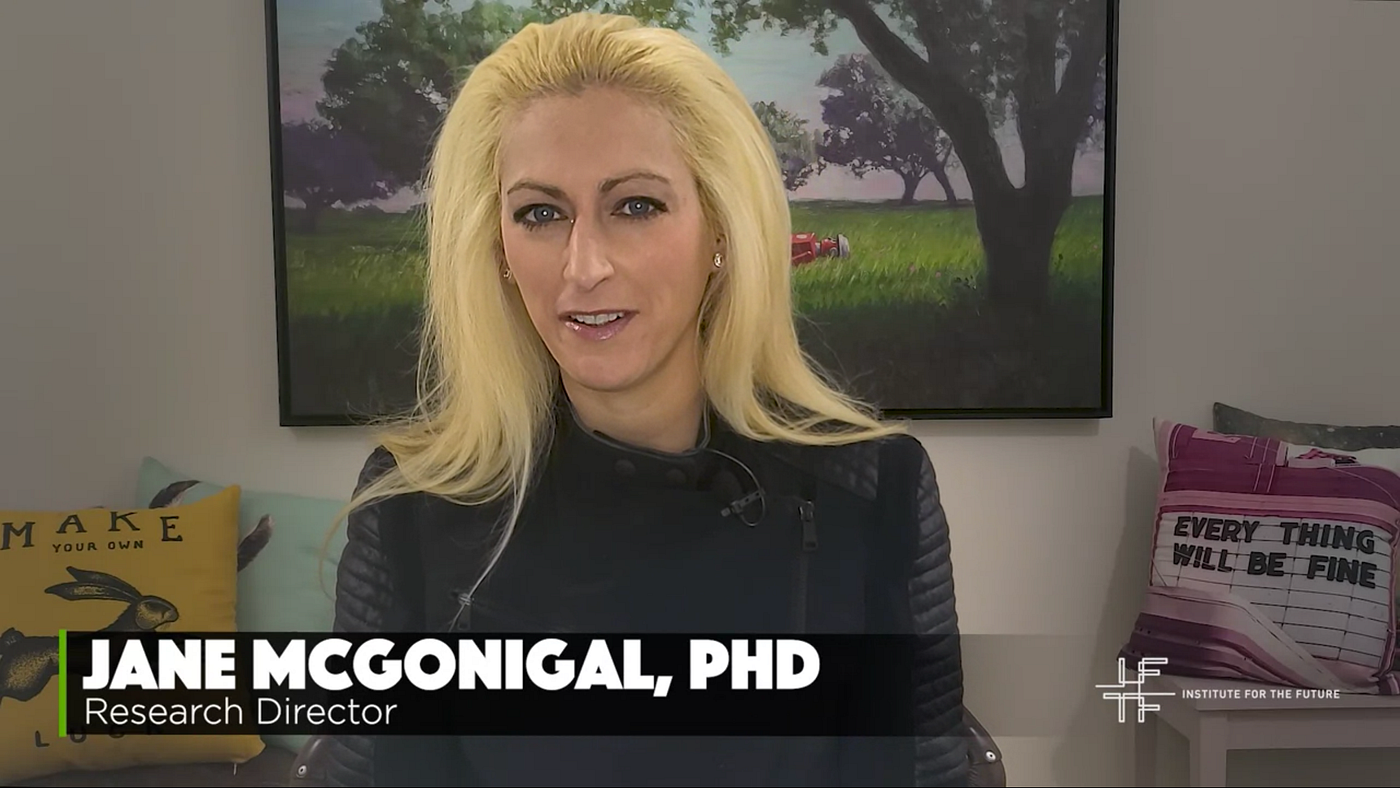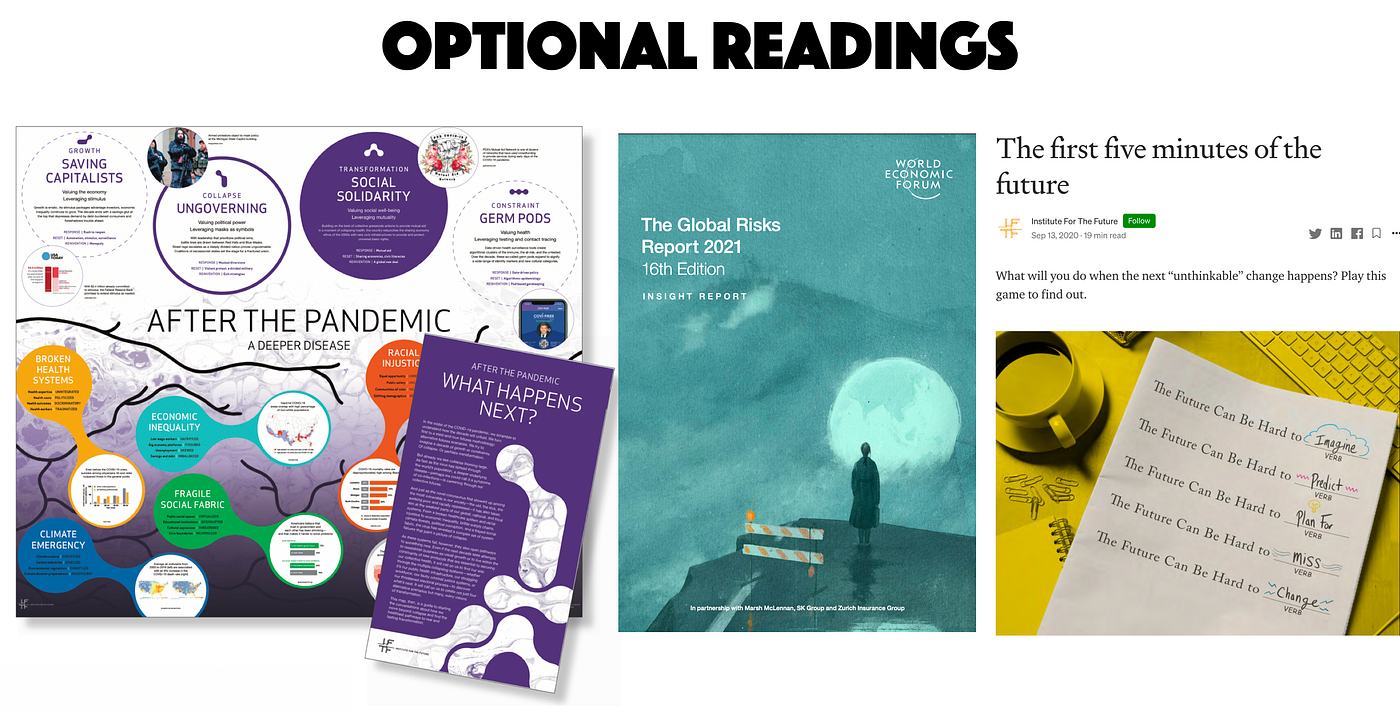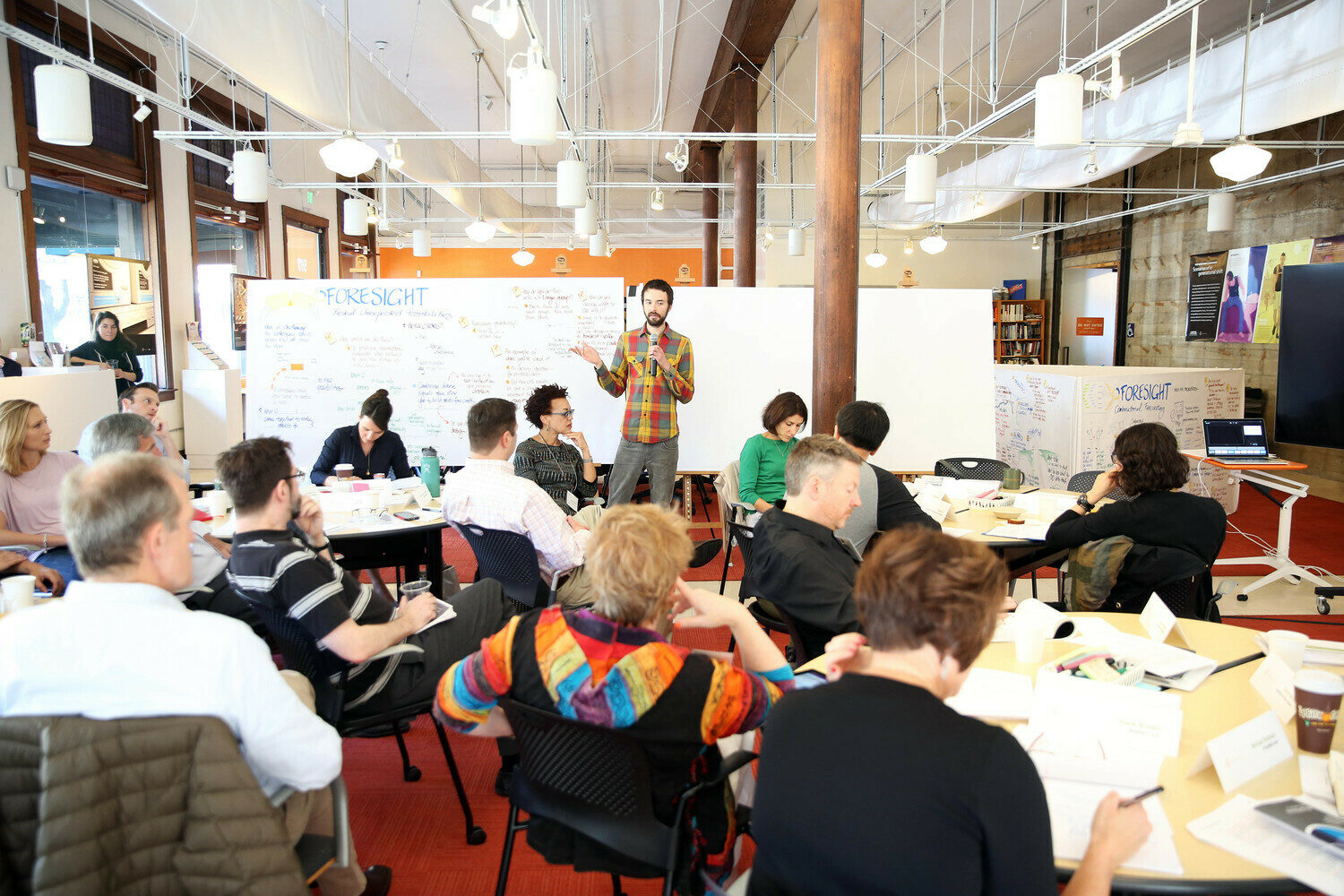Over the past few years, we’ve all felt locked up in one way or another. We’ve been living smaller lives. We’ve stayed inside. We’ve stayed apart. We’ve put ourselves underneath so much personal protective equipment.
Now there’s this positive energy. Vaccines are here. We’re seeing the light at the end of the tunnel. We’re feeling ready to open that door to our post-pandemic lives, and find out what’s on the other side.
But here’s the thing. We’re not going to just open the door, and find out what’s waiting for us out there in our new post-COVID lives. We’re going to help make that new world.
This moment of transition — from pandemic life to post-pandemic life—is a once-in-a-lifetime opportunity to change our lives and society for the better.
It’s also the best chance we’ve ever had to get ahead of future risks. There’s a common understanding that we just found out what happens when society ignores a global risk and fails to prepare, or act quickly enough. No one wants to be blindsided this badly again—whether it’s by another pandemic, the climate crisis, or some other “unthinkable” event.
It’s time to prepare our minds for life after COVID-19 and start planning for the next 3–5 years of unthinkable change. That’s why IFTF has created Life After Covid-19: Get Ready for Our Post-Pandemic Future, a new online course with our partner Coursera.org and part of our IFTF Foresight Essentials portfolio.
The Life After Covid-19 course is a self-paced online learning experience—you can start any time (including right now!) The course includes 6 hours of video lectures, 3 quizzes, 10 discussion prompts, and a final project. Commit to earning a Certificate—it’s a trusted, shareable way to showcase your new skills—and get peer feedback on assignments for $49, or audit the course for free access to all of the videos and readings.
What can you expect in this course? You’ll get a clear forecast of the challenges and opportunities you’re most likely to encounter over the next 3–5 years, as a direct result of the ongoing COVID-19 pandemic. You will:
- Find out what risks still lie ahead.
- Make a plan for resilience.
- Play future forecasting games to stretch your imagination about what’s possible.
- Build your post-pandemic confidence.
- Envision the world you want to live in when we’re all finally on the other side of Covid-19. How can you take advantage of this unprecedented moment of disruption to make positive change in your community, company or other organization?

This course is for you, whether you want to:
- Increase your personal resilience and plan for your future.
- Prepare to lead your company or other organization through post-pandemic recovery and re-invention.
- Serve a larger community or social mission, so you can make life after covid-19 a future that’s better for all.
- Turn your own difficult or traumatic experience of surviving Covid-19 into something better.
By taking this course, you’ll better understand the shock we’ve all just lived through together. You’ll be able to identify the 7 pre-existing conditions of society that made the pandemic more severe and harder to recover from — from economic inequality and racial injustice to fragile public trust and the climate emergency. Looking ahead, you’ll explore the most surprising and exciting solutions that are being proposed to help our communities heal from these pre-existing conditions.
COVID-19 is a roller-coaster ride we will all be on for years to come. The pandemic will create long-lasting and surprising ripple effects, even after vaccines are widely available. With the skills you build in this class (such as learning to spot the four patterns of change that occur during any period of crisis or major disruption) you will be better able to see the ups and downs coming. And you’ll feel more in control of what happens next, as you learn to use the Institute for the Future’s post-pandemic Toolkit for Transformation
By the end of this course, you’ll be more knowledgeable and better qualified to help yourself, or your company or other organization, navigate the rest of the pandemic and find success on our long road to recovery and reinvention.

Here’s a sneak preview of what you can expect — from Week One: Welcome to our Post-Pandemic Future.
Welcome to Life After Covid-19. This course is designed to help you get into a post-pandemic mindset.
What, exactly, is a post-pandemic mindset? The best way I know how to explain it is with this chart.

If you look at the data represented by this chart, starting with where the red arrow is pointing, it looks like there’s a huge drop in whatever this chart is tracking. From single data point to the next, there’s a steep decline. But as you keep looking at the data, it’s not actually clear what’s going on. The data is noisy. Up, down, up, down, big drops, big rises, it’s pretty much impossible to make sense of what’s happening if you’re zoomed in too close. But if you pull back, and take a longer view, it’s obvious what’s happening. The direction of change is clear. At the Institute for the Future, we say that it’s virtually impossible to predict what will happen in the very short-term. But if you zoom out, it’s much easier, to see where we’re likely to be headed in the long-term.
During times of crisis, this zoom-in/zoom-out effect is magnified. It’s easier to predict how things will be different 5 years from now than how they’ll be different 5 days from now, because there’s just too much noise in the present.
A post-pandemic mindset means getting free of the noise of the day-to-day and week-to-week changes in what’s going on with COVID-19: Is this open, is it closed? Is this safe to do, it is risky to do? What’s the latest mutation, what’s the latest headline? We’re going to zoom out from all of that and look instead at the bigger picture and the longer-term trends this pandemic is creating. We’re not going to talk about tomorrow, or next month. If we did that, this course would be obsolete before we even got started! Instead, we’re going to take a post-pandemic view. We’re going to zoom out like a satellite in space, and we’re going to be looking at the risks and opportunities of the next 3–5 years, a much bigger window, where you’ll have more time to prepare for future risks, and more runway to shape and influence how the future turns out.

There are lots of unknowns about COVID-19 that we are going to be co-existing with for years, and learning to co-exist with them is part of the post-pandemic-mindset. These unknowns are:
- How fast will we all get vaccinated?
- Will new variants cause re-infections and decrease vaccine efficacy?
- Will vaccine hesitancy or inequity lead to even more mutations, and more contagious or dangerous variants?
- When, exactly, will all restrictions end where I am and life go back to “normal”?
- Will the virus go away, or we going to live with it forever?
These are uncertainties that we are going to have to get comfortable living with for awhile, and zooming out a few years can help us do that.
At the same time there are also important knowns. We know that:
- Studies show that economic recovery from disease outbreaks historically takes ten to forty years. So we’re going to be working through the impacts of COVID-19 for at least a decade.
- We know that grief over lost opportunities and loved ones will change the emotional landscape of the next decade. We won’t just get over it and move on from COVID-19. In fact, the World Health Organization has warned that global grief is likely to be a mental health pandemic that we have to live through after the coronavirus is no longer a significant threat.
- We know that habits learned in lockdown may last a lifetime. Previous generations have been permanently changed by crises like the Great Depression, and this will hold true for COVID-19 as well.
- We know that COVID-19 is not the last pandemic we will experience. Experts predict more. And we need to make sense of what has happened, so we can be better prepared for the next one.
- And most of all, we know that in the next 3–5 years, there will be more opportunity for transformative change and global collaboration than perhaps any other moment in human history. We have seen more concentrated human effort to solve a single problem than has, literally, ever happened before. People are ready to do something big, to use this moment of unprecedented disruption to rethink and re-invent our lives and our society for the better.
Let’s take a moment to reflect on your own current mindset.
When you think about how the world, and you yourself, will recover from the pandemic over the next ten years, are you mostly worried or optimistic?
Life After Covid-19 training will help you see both sides of the future: the risks that it makes sense to worry about, and the opportunities it makes sense to be optimistic about. At the Institute for the Future, we call this using your positive and shadow imagination. It can help you be more balanced in your mindset and more resilient in your planning as you prepare for what’s next. This course will give you the opportunity to use both positive and shadow imagination, and cultivating this balance is an important part of developing a post-pandemic mindset.
After the pandemic, do you think we will mostly “go back to normal” or mostly “rethink and reinvent” how we do things?
In this course, we are going to focus on the rethink and the reinvent. Why rethink and re-invent? Well, it’s easy to prepare for futures that are similar to today. It’s the weird stuff that catches us off-guard. So it’s important to spend time getting ready for the futures that are stranger, and different. We also want to take advantage of this moment to create real and lasting change. We may never have this kind of opportunity again in our lifetime to really transform how we live. We need to use this moment strategically, and creatively.
On a scale from 1 to 10, how much control or influence do you personally feel YOU have in determining how our post-pandemic reality turns out?
Well, that’s the crucial question. My biggest hope for you is that taking this course will increase your score on that question– how much control or influence DO you really have to help determine how our post-pandemic reality turns out? My goal is to move you up at least +1, if not +2, +3 or more in response to that question. All of the skills, habits and games in the course are designed to help you find ways to take action today, to help you find your power to shape the post-pandemic future. This course isn’t just about seeing the future. It’s about acting to make the future. So keep whatever number you answered in mind, and at the end of the book, I’ll ask you this question again — and let’s see if it has increased by at least +1.
If you add all 3 of these mini-mindsets up — using both positive and shadow imagination, focusing on the opportunity to rethink and re-invent, and looking for actionable ways to increase your ability to shape the future by at least +1, you get what I believe will be the biggest take-away you’ll have from adopting a post-pandemic mindset. It’s what I call urgent optimism.

Urgent optimism is a balanced feeling. It’s recognizing that yes, there are great challenges and risks ahead, while also staying realistically hopeful that you have something to contribute to how we solve those challenges and face those risks. Urgent optimism means you’re not staying awake all night worrying about what might happen. You’re leaping out of bed in the morning with a fire in your pants to do something about it. Urgent optimism is knowing that you have agency and you have the ability, using your unique talents and skills and life experiences, to create the world you want to live in as we open up and move from our current pandemic reality to our new post-pandemic lives.
When you’re ready, let’s begin.
Life After Covid-19 is part of the Institute for the Future’s Foresight Essentials Training for individuals, teams and communities.
